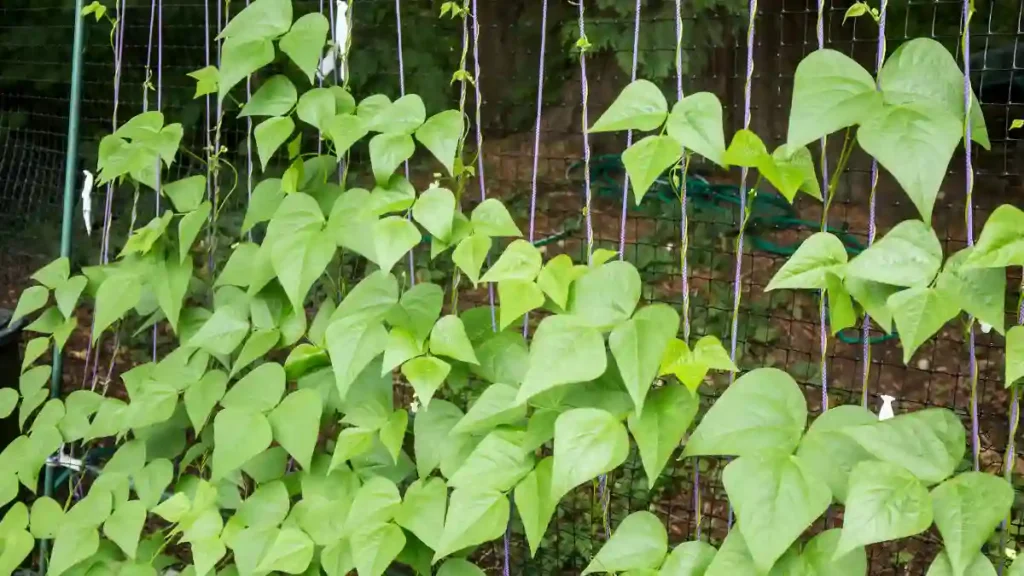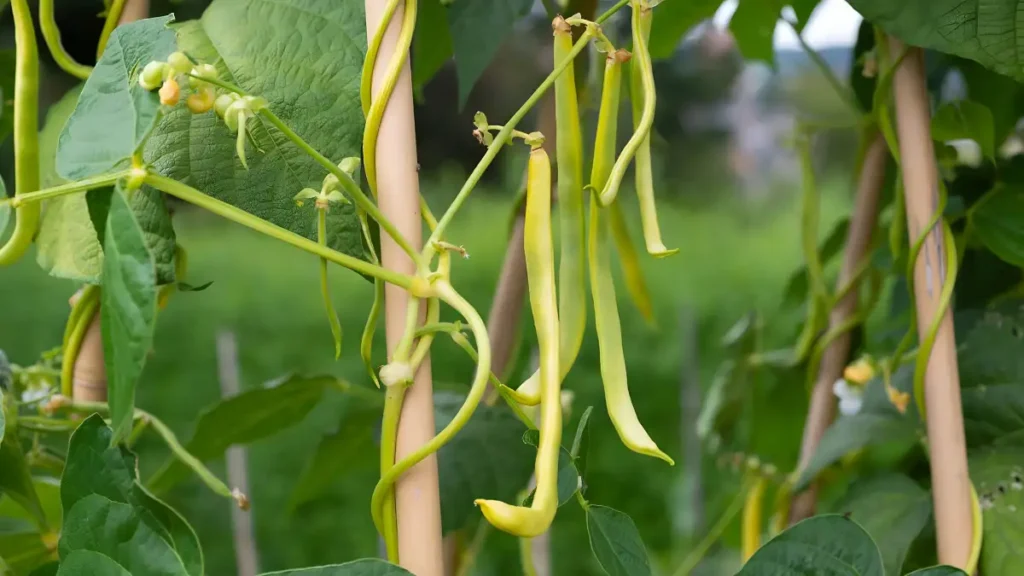A climbing bean plant known as a pole bean grows vertically and is frequently supported by poles, trellises, or other structures. Because of their great production and ability to grow more beans in a smaller space than bush beans, they are popular in home gardens. But any summer vegetable garden must contain these sweet, starchy green beans (Phaseolus vulgaris). There are several types of pole beans, including runner, snap, and green beans. Although they usually take longer to mature, they provide a consistent harvest over a few weeks, which makes them a great option for prolonged fresh bean output.
What are pole beans:
Pole beans are climbing plants that need help to flourish, in contrast to bush beans. They are renowned for their prolonged growing season and capacity for continuous bean production. The beans are perfect for vertical gardening since they grow on vines that may reach heights of six to ten feet. These beans can grow in a range of climates and produce large yields when given the right care.
What makes pole beans better than bush beans:
- These beans have various benefits, especially for people with small gardens, but bush beans also have their perks. Pole beans are a great choice for gardeners working in tiny spaces since they grow vertically and need trellises or other structures to climb.
- These beans also yield beans continually during the growing season. In contrast to bush beans, which usually yield all at once, pole beans provide a consistent crop that allows you to enjoy fresh produce for several weeks.
How to select the best types of pole beans:
- One of the most popular types, Kentucky Wonder is renowned for its long, straight pods and delicious flavor.
- Blue Lake: A delicate, highly prolific, stringless cultivar.
- Scarlet Runner: A decorative bean that yields tasty pods and has vivid scarlet blooms.
- Purple Podded: Known for its purple pods, which become green when cooked and have a delightful flavor, this variety is distinctive.

The best tips on how to grow pole beans:
Regardless of your level of gardening experience, following this guide will enable you to produce many nutritious pole beans. Come with me as we investigate all the data you need.
1. The best time to plant pole beans
These beans thrive in warm, regularly temperature soil between 15°C and 29°C. They can be planted in India from October to March during the Rabi season or June to September during the Kharif season, ensuring frost risk is eliminated.
2. Learn how to plant pole beans
- Pole beans thrive in warm, regularly drained soil between 15°C and 29°C, and can be planted in India between October-March or June-September, ensuring frost risk is eliminated.
- Plant seeds in rows, one inch deep and three inches apart, or create mounds or hills with five to six seeds, leaving three feet between each. Trim out seedlings when they reach 3 inches tall.
- To support these beans, provide immediate assistance by constructing a fence, teepee, or trellis, and using poles or posts at least 6-8 feet high. Proper support prevents sprawl, making harvesting challenging and reducing production.
3. How to care for pole beans
- A weekly inch of water is all that beans need, but they shouldn’t be watered overhead as this can encourage leaf diseases. To prevent problems like powdery mildew and to keep leaves dry, water the base of the plants.
- Mulch around pole bean plants to maintain soil temperature, control weed growth, and preserve moisture. Use organic mulch like shredded leaves, straw, or grass clippings.
- Pole beans, nitrogen-fixing plants, absorb nitrogen from the atmosphere and convert it into beneficial form. A balanced organic fertilizer at planting time is beneficial, but high-nitrogen fertilizers should be avoided to prevent excessive foliage growth and bean production.
- Companion planting helps repel pests like aphids and Mexican bean beetles by eliminating them with water and hand-plucking larger insects. Maintaining healthy airflow between vines prevents mildew.

Conclusion:
Growing pole beans in your backyard may be a fruitful and fulfilling experience. These climbing plants can provide you with abundant crops throughout the growing season if you give them the proper care. Pole beans may increase the yield and visual appeal of your garden, whether you use attractive kinds like Scarlet Runner or more classic varieties like Kentucky Wonder.
Certainly! If you’d like to learn more, please consider following our WhatsApp Channel: Harvest Gardening
A frequently asked questions:
Q1: How to grow pole beans in a raised bed?
A1: Plant the seeds 3 inches apart in full sun and well-draining soil to cultivate pole beans in an elevated bed. To keep the soil damp but not soggy, provide strong trellises or poles for support and water regularly.
Q2: When to harvest pole beans?
A2: Pole beans are ready to harvest when the pods are 4 to 6 inches long and firm, but the beans inside have not yet bulged. Depending on the type, this stage normally happens 60 to 70 days after planting.
Q3: How to harvest pole beans?
A3: Pole beans can be harvested by holding the vine in one hand and carefully snapping off the pods with the other to prevent harming the plant. It’s crucial to pick the beans frequently—at least once or twice a week—to stimulate the plant to continue producing.



